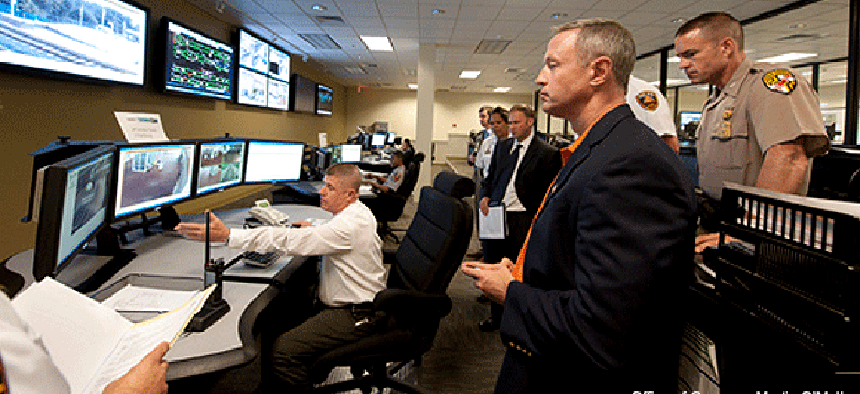Tech, tactics behind CitiWatch’s large-scale video surveillance system


Connecting state and local government leaders
A video surveillance system that combines thousands of cameras requires more than technology to be effective.
Baltimore’s CitiWatch program includes a video surveillance system that connects more than a thousand cameras controlled by more than 50 federal, state and local agencies and non-governmental organizations. It uses a Physical Security Information Management system to correlate information, but making it work requires more than technology.
“You have to build partnerships with the private sector, and you need to have their trust,” said Baltimore police Lt. Sam Hood, CitiWatch’s director of law enforcement operations.
This requires a program that sets limits on the access and control of each player. In Baltimore, this means that CitiWatch personnel have access to video feeds from other departments, but they do not control the cameras.
“You stay in your lane,” Hood said. Monitors can use a Maryland Transit Administration camera to follow a suspect from the street to a subway platform, for instance, but they cannot move the MTA camera. Clear limits on control can enable sharing among departments that in the past were reluctant to grant access. “There are no more lines in the sand,” Hood said.
Having the right people in place also is important. CitiWatch is a separate organization rather than a part of the Baltimore Police Department. There are three full-time police officers assigned to it, along with two people from the mayor’s IT office, but the bulk of the staff is made up of 29 retired policemen who monitor the system.
“When we started we used volunteers, but it wasn’t effective and it wasn’t consistent,” Hood said. Retired cops have the experience needed to work in a police environment. “They can communicate, they have the prerequisite knowledge and skill to work with the officers.” They operate directly on the police radio network rather than through a dispatcher or the 911 answering center.
CitiWatch is growing, having added 200 of its own cameras in 2012, but Hood envisions a system in the not-too-distant future that will depend on the public rather than a dedicated infrastructure.
“I don’t need to buy a lot of cameras,” he said. “Eventually, everybody is carrying a camera. I just have to find a way to get that video to me.”
He is working on a program to bring crowdsourced video into CitiWatch via social media, getting near-real-time access instead of issuing pleas for information through the news and waiting for responses.
In the near-term, CitiWatch is developing a database of privately owned video surveillance cameras not included in its network so that the police can gather data quickly in the wake of a crime or other incident, rather than waiting for someone to come forward with it.




